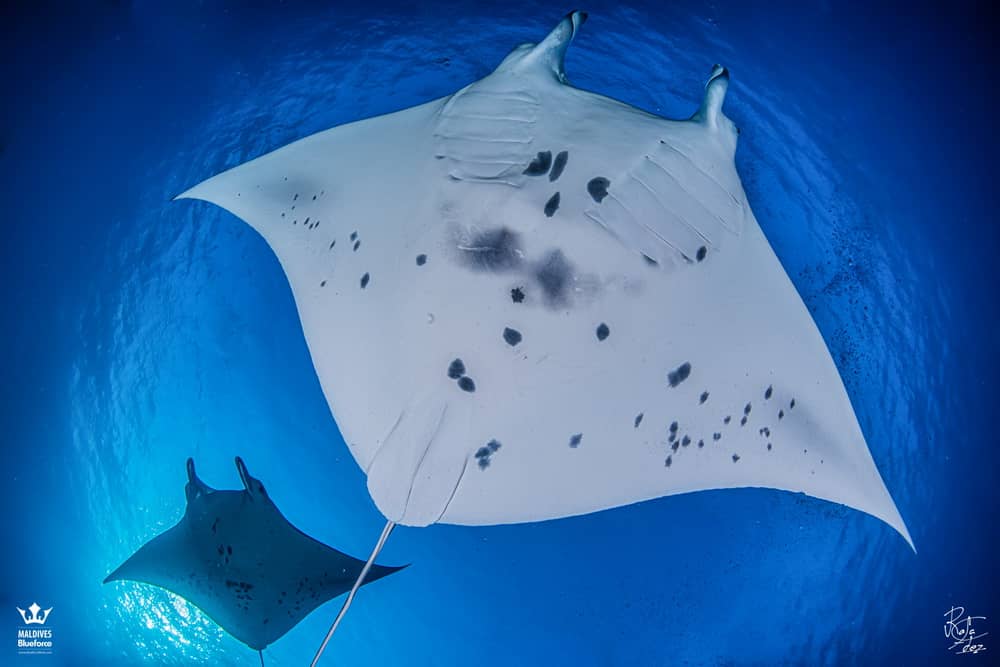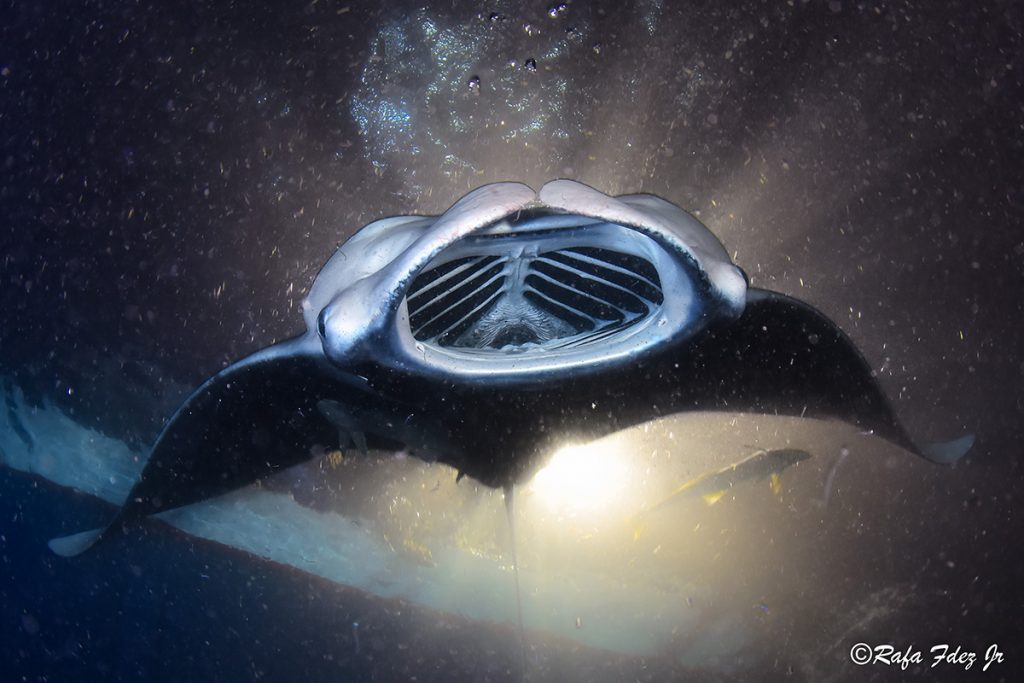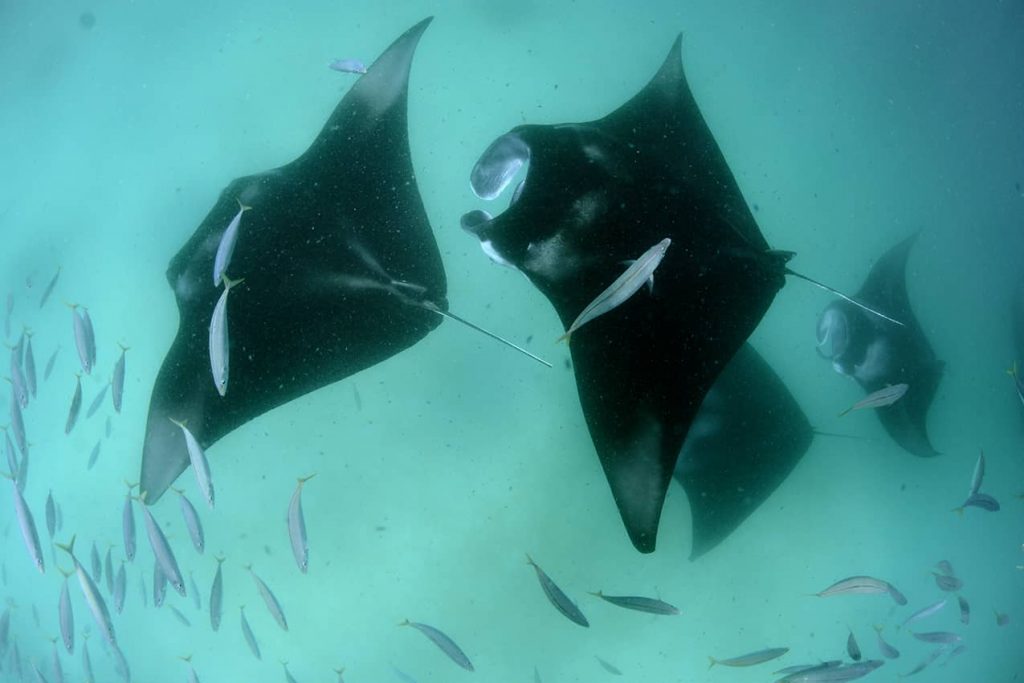Manta Rays
Dancers of the Sea

by Gádor Muntaner
Who said there were no dances under the sea?
When we cross the surface of the Ocean, we enter a new world, with its own rules, its own rhythms, but very similar to our terrestrial world! Reefs are large underwater cities, around which a life system of thousands of living beings is created, each one with its work and its function. And like in every city … there are also night shows! And one of the most impressive, it is without a doubt the majestic dance of the Manta Rays!

Are manta rays dangerous?
The manta rays (Mobula Alfredi) is one of the largest and most iconic marine species in the Maldives. Like sharks, they belong to the group of cartilaginous fish or Elasmobranchs, but they are not dangerous. The manta rays size can be huge, they can measure up to 4.5m in wingspan, weigh 700 kg, and live 40 years! Because they frequent relatively shallow waters along the coastal reefs of the continents and oceanic islands, encounters with this species are more frequent than with its cousins, the oceanic manta (Mobula birostris).
Can manta rays sting?

Manta rays have long tails like other rays. However, mantas do not have a barb. That means that, as impressive as they seem to us, they cannot sting us!
You may wonder … What protection strategy do they use then? Mantas use their size and speed to escape predators. Although, to tell the truth, they have very few!
Where do mantas rays live?
Manta Rays are widely distributed throughout the tropical and subtropical regions of the Indian Ocean and western Pacific. However, they are also threatened by targeted fisheries driven by demand for their gills. Therefore, divers, promoting diving ecotourism with these wonderful animals, we help their conservation! And in return, they help us make our dreams come true by being part of the magical night dance that they star in.

How much does a manta ray weigh? Feeding behaviors.
At nightfall, the lights on the stern of our boat, the Maldives Blue Force One, attract and concentrate the zooplankton, which is the food of our hosts, the Manta rays. That is why, in a matter of minutes, they can get to feed a few meters from us. As soon as the first manta appears, the Blue Force One crew has everything ready so that we can dive into the spectacle. The dive is easy; It consists only of staying still a few meters deep, and enjoy!
It is such a captivating dance that it does not need more music than the bubbling of our air tanks! And it allows us to contemplate every detail, very closely (and when we say VERY closely… we mean having the Manta rays a few inches from our eyes!). When manta rays open their mouths to feed, they unfold those horn-shaped projections, called cephalic lobes, to channel plankton-rich water through their specially adapted gills. The body and mouth develop into a giant black hole, with the pectoral fins serving as wings that propel the manta rays through the water.
To optimize energy because the big manta size, they have developed many variations in their swimming positions, sometimes including complex group strategies, which require coordination between several individuals to improve feeding efficiency.
To date, expert scientists have described a total of 8 different eating strategies!
Whatever the causes that rule the habits and lives of these mysterious animals, it is a real privilege to be able to enjoy their majestic presence and observe them so closely. Few places in the world allow us to enjoy such close encounters in the best conditions. Those moments will remain in our brain forever and will be the object of our dreams … at least until we return to the Maldives!
Join us to make your dream come true!
Night dive with manta rays. Something unique in the world
It is a real privilege to be able to witness such a unique event that for many it will become one of the most special dives of our lives.
Every week aboard the Maldives Blue Force One, on the Maldives Central Atolls route, we try to turn this dream for many divers into reality.
Do you dare to live it with us? Reserve now!

We are happy to be a “Manta Trust Responsible Tourism Operator” working with the Manta Trust Organization with their program “Swim with Mantas“